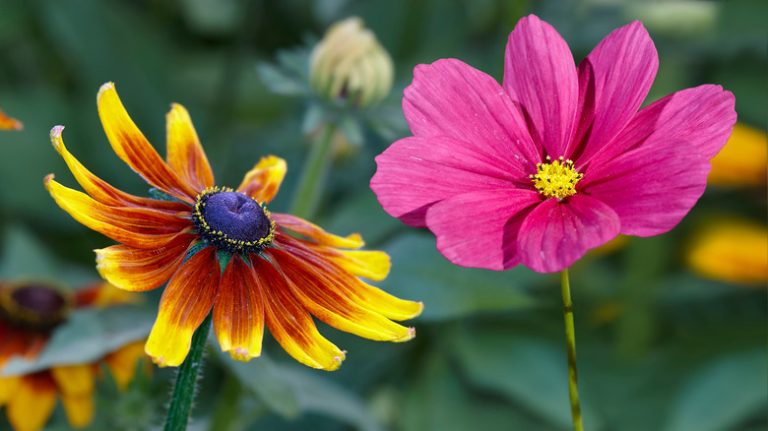Snap Dragon (Antirrhinum majus) is a popular flowering plant that is known for its charming appearance and vibrant colors. It is widely grown in gardens and landscapes, and is also a common choice for commercial production. Snap dragons are heat-tolerant and can be grown in a variety of conditions, making them a favorite among gardeners.
The process of growing snap dragon seedlings starts with choosing the right variety. There are many different varieties of snap dragons to choose from, including tall and dwarf varieties, as well as those with single or double blooms. Once you have chosen the variety, you can proceed to the next stage.
The first step in growing snap dragon seedlings is to sow the seeds. Snap dragons can be grown from seed, and germination usually takes place within 10 to 14 days. To speed up the germination process, you can soak the seeds in water overnight or score the seed coat with a toothpick. After sowing the seeds, cover them lightly with potting soil and water gently. Maintain a temperature of around 70°F (21°C) to ensure optimum growth.
Once the seeds have germinated, you can move the seedlings to individual pots or trays. It is important to ensure that each seedling has enough space to grow, so they should be spaced around 6 inches (15 cm) apart. Snap dragon seedlings are sensitive to overwatering, so be careful not to water them too much. Instead, water them when the top inch of soil feels dry to the touch.
Snap dragon seedlings can be grown indoors or in a greenhouse until they are ready to be transplanted into the garden. When the weather is warm enough and the risk of frost has passed, you can plant the seedlings in a sunny spot in the garden. Snap dragons require full sun to flower and perform at their best. They also prefer well-draining soil with a pH level between 6.0 and 7.0.
Throughout the growing season, snap dragons should be watered regularly and fertilized every four to six weeks. Deadheading spent flowers will encourage the plant to produce more blooms. Snap dragons are also prone to mold and mildew, so it is important to keep an eye out for any signs of disease. If necessary, treat the plants with a fungicide or insecticide.
In conclusion, snap dragon seedlings are easy to grow and are a beautiful addition to any garden or landscape. By following the right techniques and providing the optimum growing conditions, you can enjoy the stunning blooms of snap dragons for a longer period of time. So why not give snap dragons a try and add some color to your garden?
Snapdragon Seeds
If you’re a gardener, you may be familiar with snapdragon seeds. These seeds come from the snapdragon plant, a popular choice for many landscapers and home gardeners. Snapdragon seeds are relatively easy to grow and can produce beautiful flowers in a variety of colors.
When it comes to the production of snapdragon seeds, it’s important to make sure you’re using high-quality seeds. These seeds are typically sold in small packets containing around 50-100 seeds. It’s best to buy your seeds from a trusted source, such as a reputable nursery or garden center.
The snapdragon plant is a late spring or early summer bloomer, with flowers that can last until the first frost. It’s important to note that snapdragons are sensitive to frost and temperatures below freezing can damage or kill the plants. When sowing snapdragon seeds, it’s recommended to start them indoors about 10-12 weeks before the last expected frost date.
To sow the seeds, fill a tray or seedling cells with a moistened seed-starting mix. Then, sprinkle the snapdragon seeds on top of the soil, making sure to space them apart. It’s best to plant the seeds about half an inch apart. Lightly press the seeds into the soil using a toothpick or your finger, being careful not to bury them too deep.
Once the seeds are planted, cover the tray or cells with a plastic dome or plastic wrap to create a greenhouse effect. This will help to keep the soil warm and the seeds moist. Place the tray or cells in a bright area, such as a sunny windowsill or under grow lights.
The snapdragon seeds should germinate within one to three weeks. Once the seedlings appear, remove the plastic covering and provide them with plenty of light. It’s important to keep the soil evenly moist, but not saturated, to prevent mold or root diseases. Watering from below is recommended to avoid getting the leaves wet, as this can lead to diseases.
As the snapdragons grow, thin them out if necessary. The optimum spacing between plants is about 6-9 inches. When the seedlings have grown a few sets of true leaves and are sturdy enough, they can be transplanted outdoors. Wait until all danger of frost has passed before transplanting.
Snapdragons are relatively low-maintenance plants, but they can be sensitive to pests such as aphids and swallowtail caterpillars. Regularly inspect your plants and take precautions if necessary, such as using organic pesticides or insecticidal soap. Snipping off any dead or diseased leaves or flowers can also help promote healthy plant growth.
If you’re looking for a favorite snapdragon variety, the Chantilly and Twinny series are popular choices among gardeners. These proprietary varieties offer a wide range of colors and have been bred for their excellent performance.
In conclusion, snapdragon seeds are a great addition to any garden. By following the proper sowing and growing techniques, you can enjoy beautiful snapdragons in your landscape. Whether grown from seeds or purchased as plugs, these plants can hold their own against the elements and add a touch of color to your garden.
Dwarf Snapdragons
Dwarf snapdragons are a favorite among gardeners. These small, compact varieties of snapdragons are perfect for adding color and texture to any landscape. They are heat-tolerant and can thrive in a variety of temperature conditions.
Growing dwarf snapdragons from seed is a relatively easy process. Start by sowing the snapdragon seeds in potting trays or cells, making sure to lightly sprinkle them on the surface without covering them. Watering is key at this stage, as the seeds require saturated conditions to promote germination. Once the seedlings appear, you can then transplant them to larger containers for optimum growth.
When planting dwarf snapdragons, spacing is important. Make sure to leave enough room between each plant to allow for proper air circulation and growth. These compact plants typically grow to about half the size of their taller counterparts, so be sure to plan accordingly when designing your garden.
To ensure healthy growth, provide the dwarf snapdragons with the required amount of light and water. They prefer bright light, but not direct sunlight, so placing them near a fluorescent light source is ideal. Additionally, water them regularly, making sure not to overwater or let the soil dry out completely.
During the blooming stage, dwarf snapdragons produce beautiful flowers in a variety of colors, including pink, red, yellow, orange, and white. Their vibrant blooms are a great addition to any garden or landscape. To promote blooming, deadhead the flowers by removing the fading petals. This encourages the plants to produce more flowers.
Commercial production of dwarf snapdragons is also possible. Many commercial growers use proprietary methods and techniques to grow these plants on a larger scale. They are often grown in plug trays or other specialized containers to ensure uniformity and optimum growth. This allows for mass production and ensures a consistent product for the market.
In areas with severe winter temperatures, dwarf snapdragons may require some protection. Mulching around the plants can help insulate the roots and protect them from the cold. Additionally, covering the plants with a frost cloth or similar material can provide extra warmth and protection.
All in all, dwarf snapdragons are a versatile and beautiful addition to any garden. Whether you’re a seasoned gardener or just starting out, these compact plants are sure to bring color and life to your outdoor space.
Twinny Series
Twinny Series snapdragons are a favorite among growers and gardeners due to their unique characteristics and beautiful blooms. This series is known for its ability to produce twin flowers on a single stem, creating a stunning display in any garden or landscape.
The Twinny Series is a dwarf variety of snapdragons, growing to an average height of about 8 to 10 inches. This makes them perfect for growing in containers, small spaces, or as a border plant in gardens. The compact size also allows for tighter spacing when planting, maximizing the number of plants that can be grown in a given area.
The Twinny Series is a cool-season floral crop that is typically grown from seeds or propagated through cuttings. When starting from seeds, it is best to sow them indoors about 8 to 12 weeks before the last frost date. The seeds are very tiny and should be lightly covered with soil to ensure proper germination. Maintain a consistent soil moisture level, avoiding overwatering as this can lead to seedlings wilting or root rot.
Once the seedlings have developed true leaves, they can be transplanted into individual pots or trays, where they will continue to grow until they are ready for planting outdoors. The recommended spacing for Twinny Series snapdragons is about 6 to 8 inches apart, allowing enough room for the plants to reach their optimum size and bloom freely.
Twinny Series snapdragons prefer full sun to part shade and well-drained soil. They are not tolerant of severe heat or saturated soil conditions. In hot climates, it is best to provide some afternoon shade to prevent wilting and damage to the plants. In colder regions, they can be planted earlier in the spring or even in late fall for overwintering.
The Twinny Series snapdragons have a short time to harvest, with blooming occurring approximately 12 to 14 weeks after planting. The flowers are available in a variety of colors, including pinks, reds, yellows, and whites, allowing for endless possibilities in garden design.
Growing the Twinny Series snapdragons can be a rewarding experience for both novice and experienced gardeners. Their unique twin flowers and compact growth habit make them a standout in any garden or landscape. Give them a try and enjoy their beauty for yourself!
References:
– Gilman, E. F. (1999). Antirrhinum majus. University of Florida IFAS Extension.
– Critchley, J. ( 2025). Growing Snapdragons. Back to the Basics Growing.

